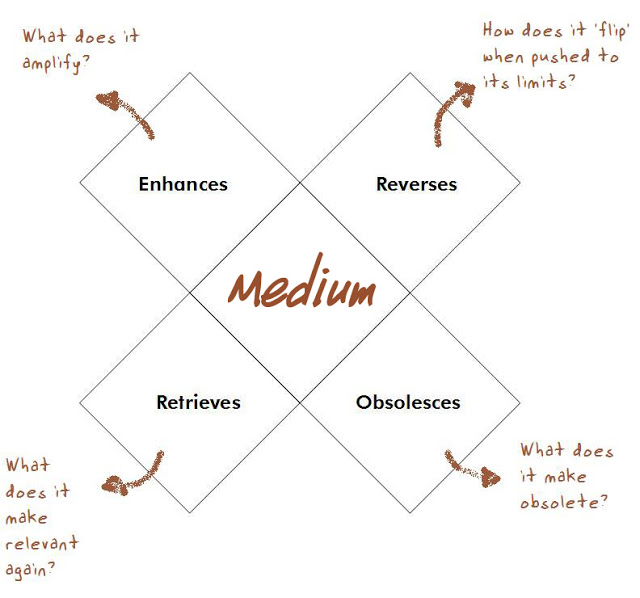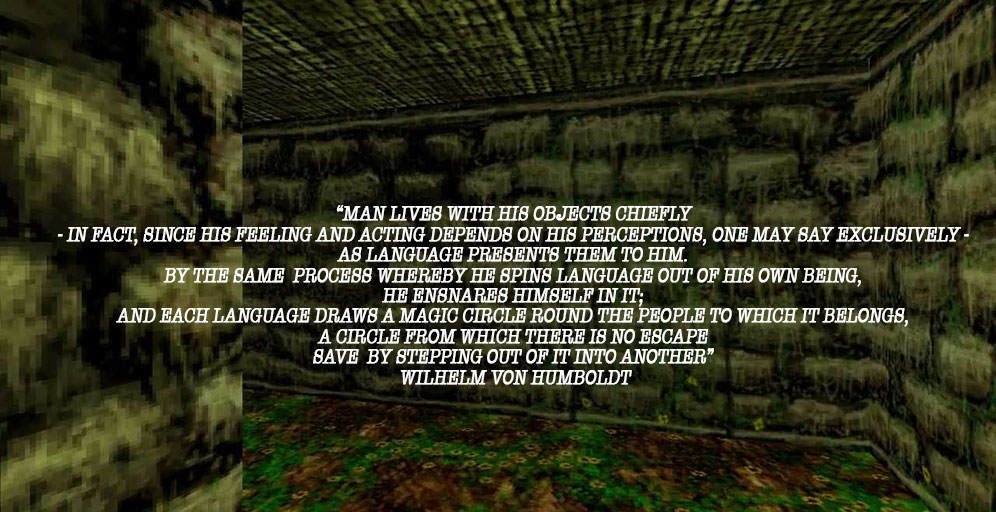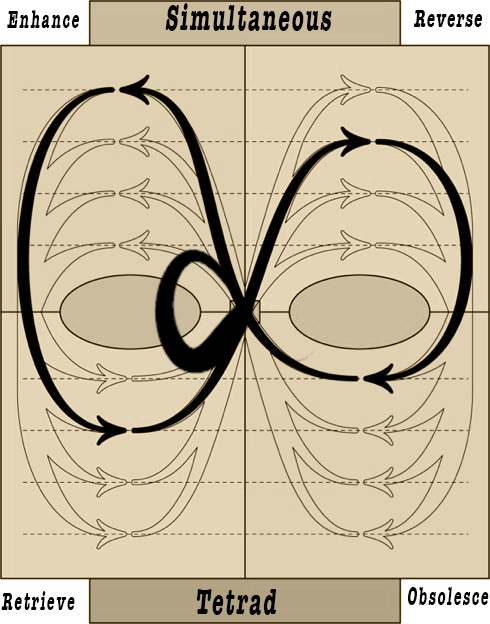I recently watched Alexa Clay’s Futurist Amish.
I found her ideas profound and thought provoking; Some things in life are like buttermilk, they should be enjoyed as they are and not improved upon. Amen to that. She also tells us that a digital detox is not the answer to a healthy approach to technology or nostalgia for days gone by. The answer ( or an answer) is intentional technology – we need to ask the ‘why’ of technology. Purpose matters to healthy use. Amen to that too.
Alexa also reminded me about a common cycle with new technology: we first feel a sense of wonder or awe at a new artefact that allows us to x, where x equals something we could not do before or could not do easily at least. I know that feeling. Yet, over time with overuse, or non-intentional use, we become like Zombies driven by it. She uses a fairly memorable image to explore how can end up relating to technology , all we can think about is how can to escape our fate… hence the digital detox seems the only answer.

I do remember that feeling of wonder and awe. I still feel it with certain new ‘toys’ I come across that enable something that seems impossible or almost magical. Yet, all this talk about digital detox and digital Sabbaths does show that, for many of us, there is nothing terribly magical about the relationship we have created with technology.
In the video, Alexa speaks to platform design issues, she asks about the ways we can we may design software that makes us more human rather than turn us into zombies. The skeptic in me believes this will not happen, no matter how many idealists suggest it, until it becomes economically viable.
Yet the buttermilk idea juxtaposed with the grasping zombie stayed in mind.
It got me thinking about final causes, why we do what we do. Alexa reminds us that when we talk about technology in terms of what it produces, we forget to ask what its products are for. The telos or end of something. She says ‘purpose matters’.
Another blog post came to my attention about the same time as the video: What does this thing called Twitter do? The post works with McLuhan’s 4 Laws of Media to inquire into the impact of Twitter on personal life. Sheridan (1990) asserts that the 4 laws of media are ‘the most comprehensive and capable framework that has been developed so far whereby to evaluate the impacts and implications of new technologies.’ I thought this was worth exploring a little further; I have been intending to read McLuhan in depth for a while and now I had the time.
McLuhan’s effects or laws to analyse any medium or artefact can be found on the google in many different forms,
 The Twitter blog post is an example of using these questions for reflection, but removed from the context of McLuhan’s work. I think this is a very limited use for a framework that needs deep attention to be grasped and is certainly so much more than four simple questions.
The Twitter blog post is an example of using these questions for reflection, but removed from the context of McLuhan’s work. I think this is a very limited use for a framework that needs deep attention to be grasped and is certainly so much more than four simple questions.
As I read McLuhan, critics and fans, I see that people interpret the questions very differently.
Importantly, the way the questions are used in the diagram above and on the Twitter blog post neglect to speak about the ground to his questions. I came to grasp that McLuhan’s laws cannot be understood linearly. I close read the Laws of Media several times. It was a joyous and difficult read. The figure/ground relationship was key to understanding the 4 questions which he calls a Tetrad, as was the idea of simultaneous tetrads.
As I took time to read the book (an old PDF on my kindle, actually) I also noticed the Zombie relationship emerging in my use of social media in particular.
I noticed that people and information were starting to blend together online; that scrolling seemed to have become a substitute for the effort of conversation. I was so tired, hence no energy for the effort of real conversation, that I could not stop scrolling as I pretended to myself that this was real connection; precious attention drawn to a name I know, 14o characters, a short response or even easier just a like. The more I scrolled the more weary I got and the more like a zombie I felt. I am okay with that when what I scroll is just information; heck, I have spent a lifetime in academia feeling weary about information I can never catch up with. I am not okay with scrolling relationships that matter to me personally. One effect of social media for me is that the boundary between conversation and information seem to blur. I wanted to understand the weariness better.
How could I apply ‘the most comprehensive and capable framework’ to my use of technology?
What does Twitter flips into, when pushed, in my own use of it? I was curious to learn more.
Each of us needs to identify for ourselves what wears us out and what preserves that sense of wonder in our use of technology. I wanted to shape a few questions more precisely and less simplistically than ‘Do I need a digital detox?’.
We seek balance between the analogue and the digital in life. The idea holds a kind of magical appeal; yet it seems just a myth to me; compartmentalising our analogue and digital life is simply not possible: email, smartphones, working across time zones, multiple uses for our devices from making art to virtual offices… I wonder if instead of endorsing the analogue-digital balance myth, we may be better off working towards integration. This is why reading McLuhan’s Laws of Media as questions out of context is just wrong, or at least it was never his intent that we should turn them into mere linear explantion.
The best short introduction I have found that does justice to the book is a video,
And I strongly encourage anyone interested to watch the full video: it is called: McLuhans Wake, by Kevin McMahon (2002) but rights belong to Primitive Entertainment, so there may be issues finding it. Here is a link from the Wayback Machine.
McLuhan was most interested in formal cause, and in searching for pattern he offers us a sense of how media works beyond content: ‘Too much of anything, however sweet, will bring the opposite of whatever you thought you were getting. One becomes many, many become one. You start out a consumer and you end up consumed. The trick is to recognise the pattern before it is complete.” Instead, we tend to look at what an artefact enhances, forget the 3 other elements of the simultaneous tetrad and create false narratives that the latest artefact will finally bring world peace or whatever utopia we happen to be attached to.
McLuhan said: ‘Nothing is inevitable provided we are prepared to pay attention’. We know that here on the Still Web and work to offer resources to train the attention to enable intentionality rather than inevitability. It is human to filter out data and create figure from ground that then becomes fixed…until it fails or, in McLuhan’s words, until the pattern is complete. We do not like patterns completing and recognising the pattern before it is complete, requires trained attention and a still mind.
We need to commit to an ongoing inquiry, to an intentional use of technology. We can choose to use technology to become more aware of how habits form and break or not. My personal inquiry in the last month has led me to a few probes I will be using to engage with technology going forward,
- the medium affects the quality of our ‘why’ – purpose matters
- the point of practice is to practise
- you need to break a habit to notice a habit
- things take time, it is that simple. If faster, stuff in background suffers. If slower more of the background can emerge in the foreground.
- creating time the hear oneself beyond the ‘they-self’ of social media offers a different experience from the ‘discarnate’ self online McLuhan predicted many years ago
- salvation or damnation narratives do not serve us; understanding the parameters that lead to our mental well being and taking a long hard look at the way we are living, does.
Inquiring into all this, may require us to create what McLuhan called an anti-environment. We do not notice habit until we are forced to break it. He saw art as new perception: ‘Art as an anti-environment is an indispensable means of perception for environments, as such, are imperceptible.’ He quotes Von Humbolt to show how we are ensnared by the words we create,

A digital detox can be only a start not an end in itself. As of today, I am not tired and I have stopped scrolling like a zombie. I will keep on working daily towards healthy integration.
“To behold, use or perceive any extension of ourselves in technological forms is necessarily to embrace it. By continuously embracing technologies, we relate ourselves to them as servo-mechanisms” (McLuhan 1964)
I see a more useful depiction of the simultaneous tetrad like this,

It all belongs and will follow the cycle. We cannot hold it all in consciousness but we can keep practising.
References
Sheridan, William. 1990. The Paradigm Shift of the Information Age. Literary Review.
McLuhan, M., & McLuhan, E. (1992). Laws of media: The new science. University of Toronto Press.
